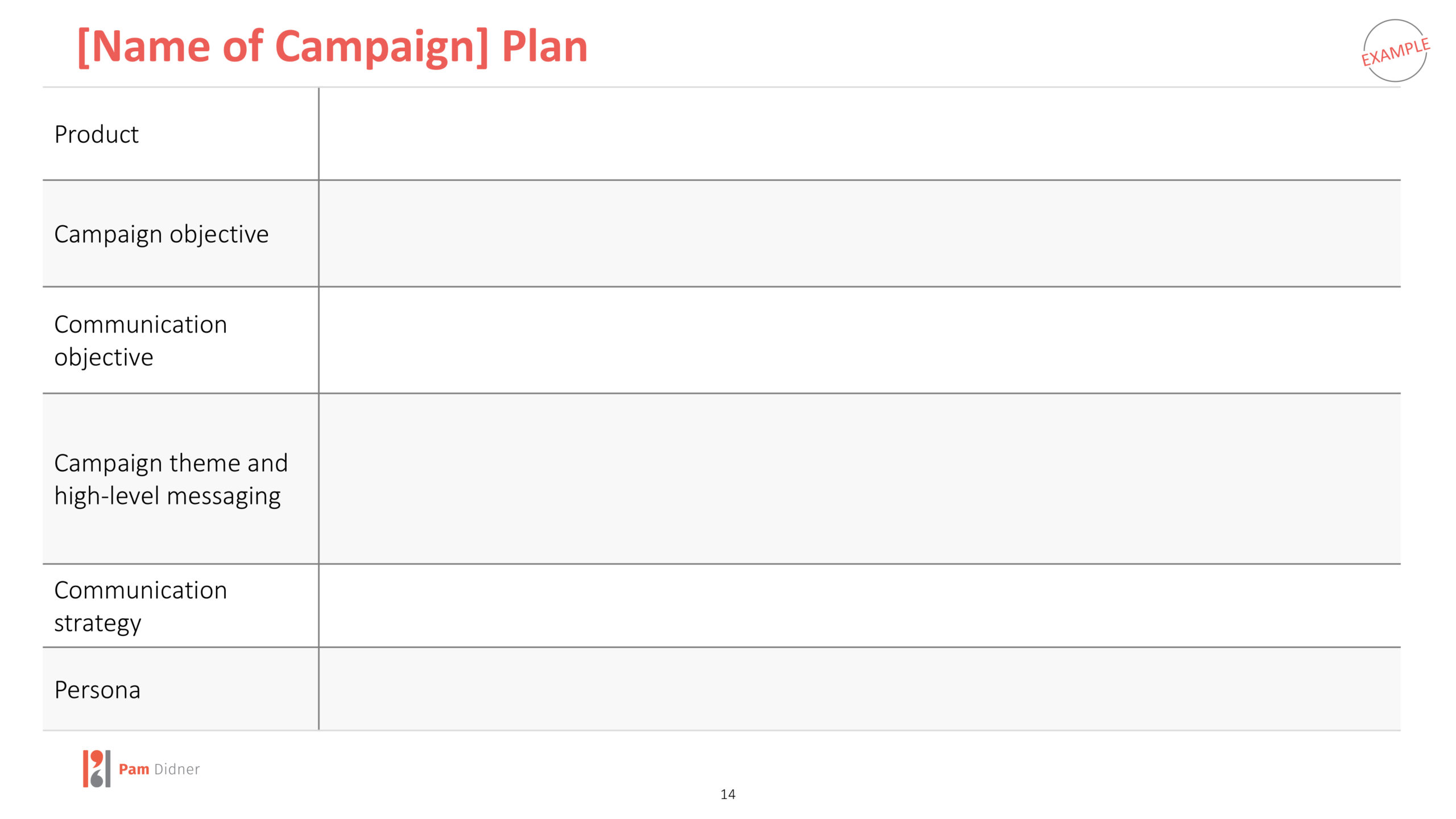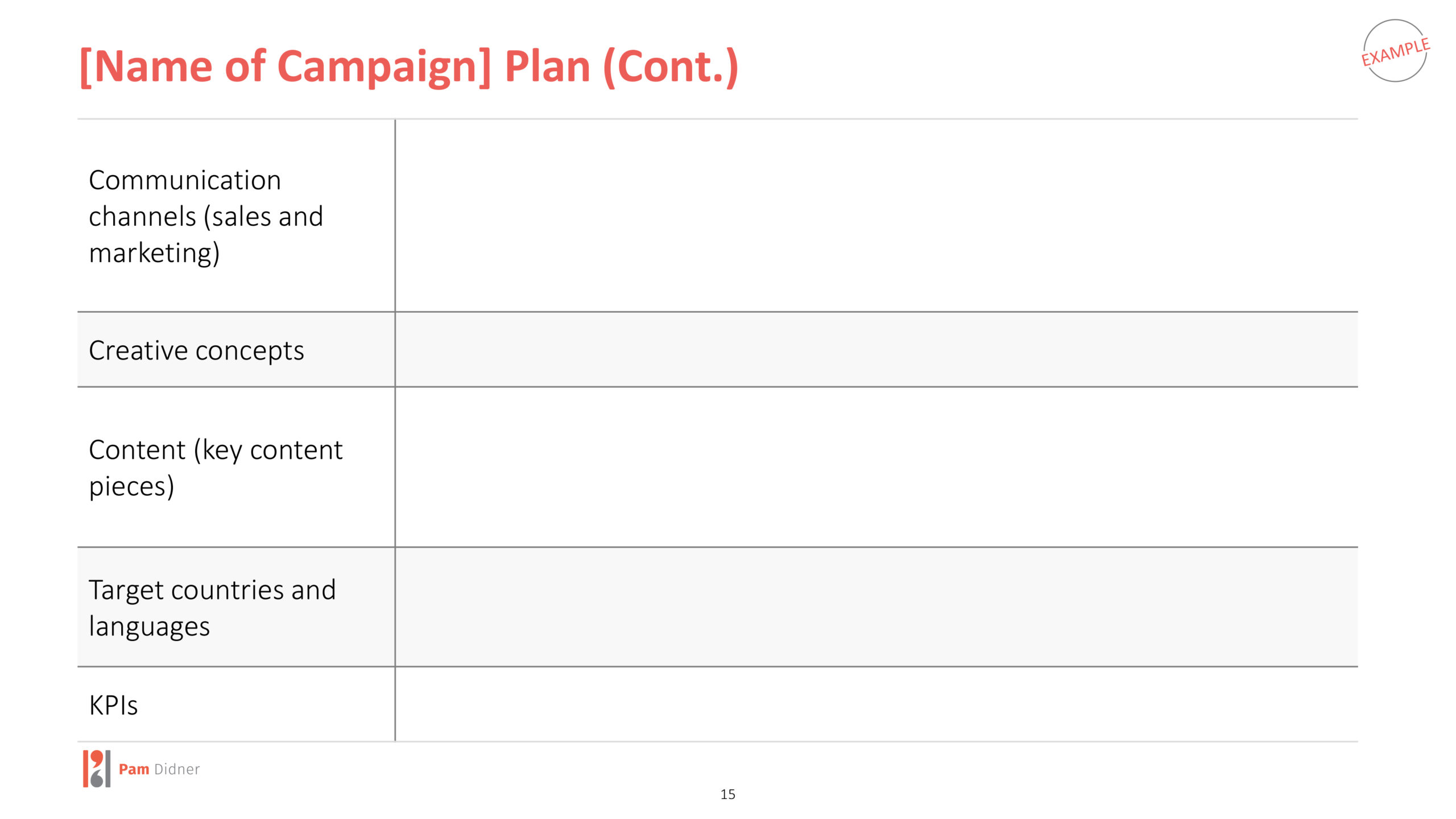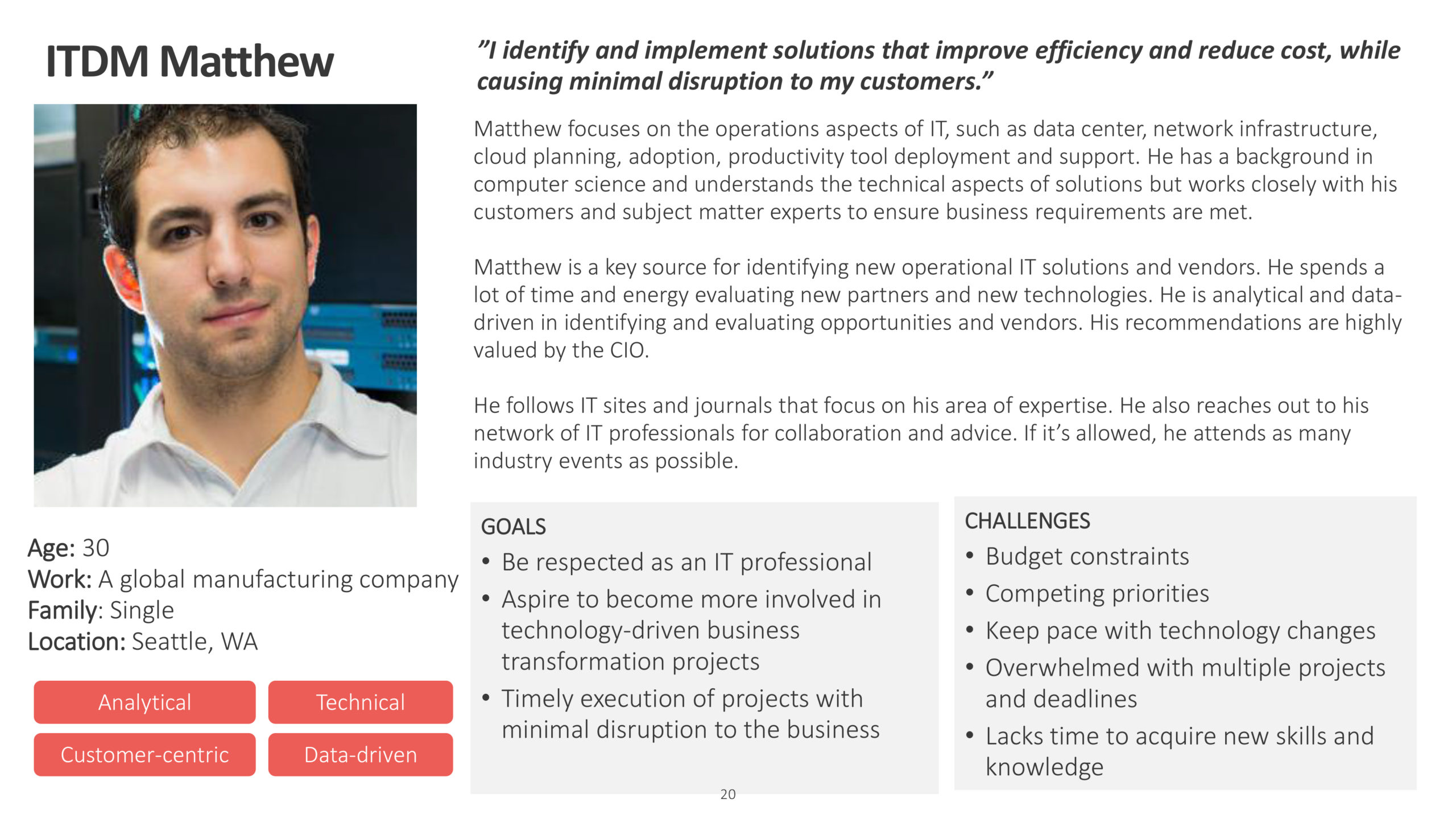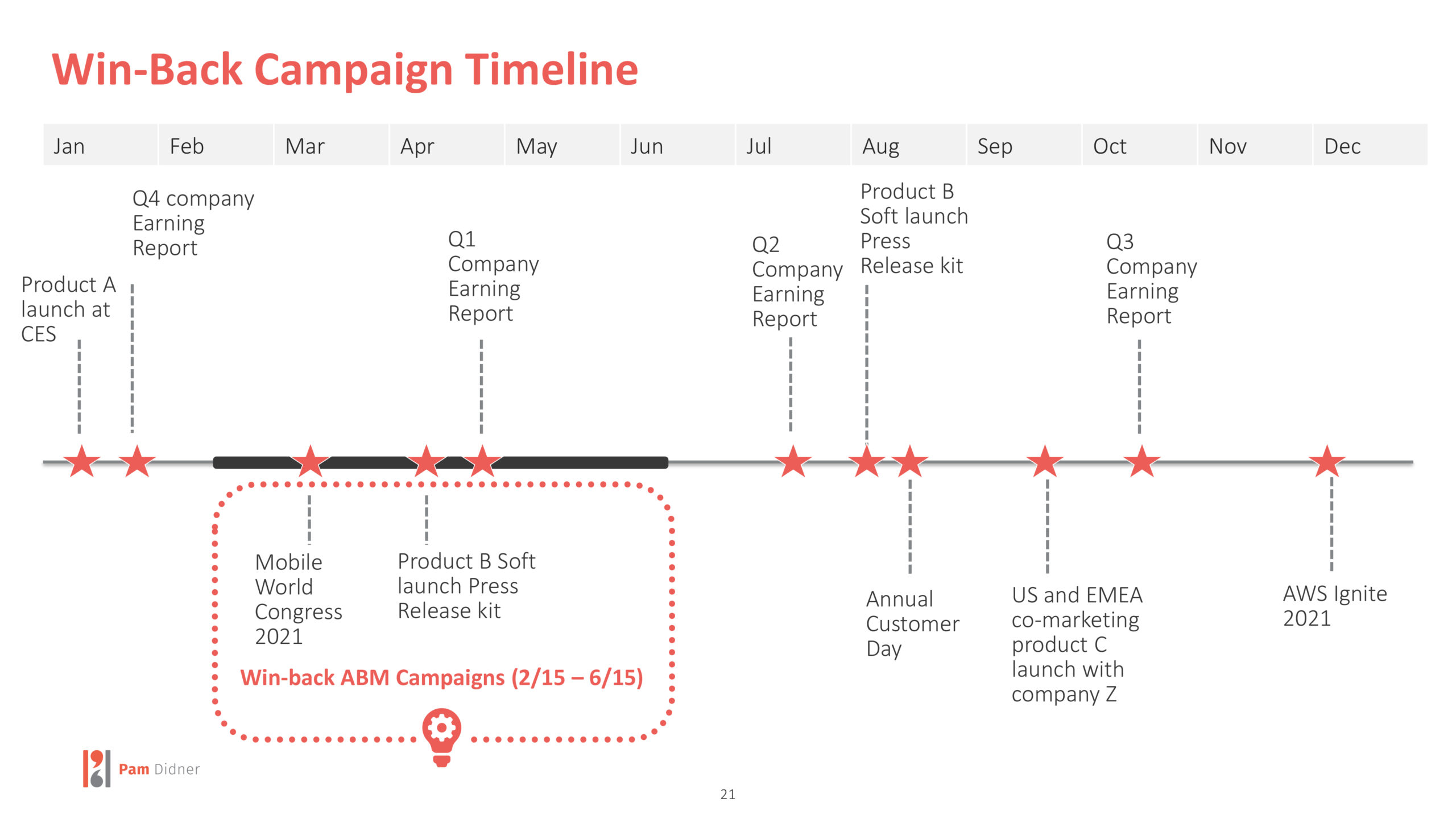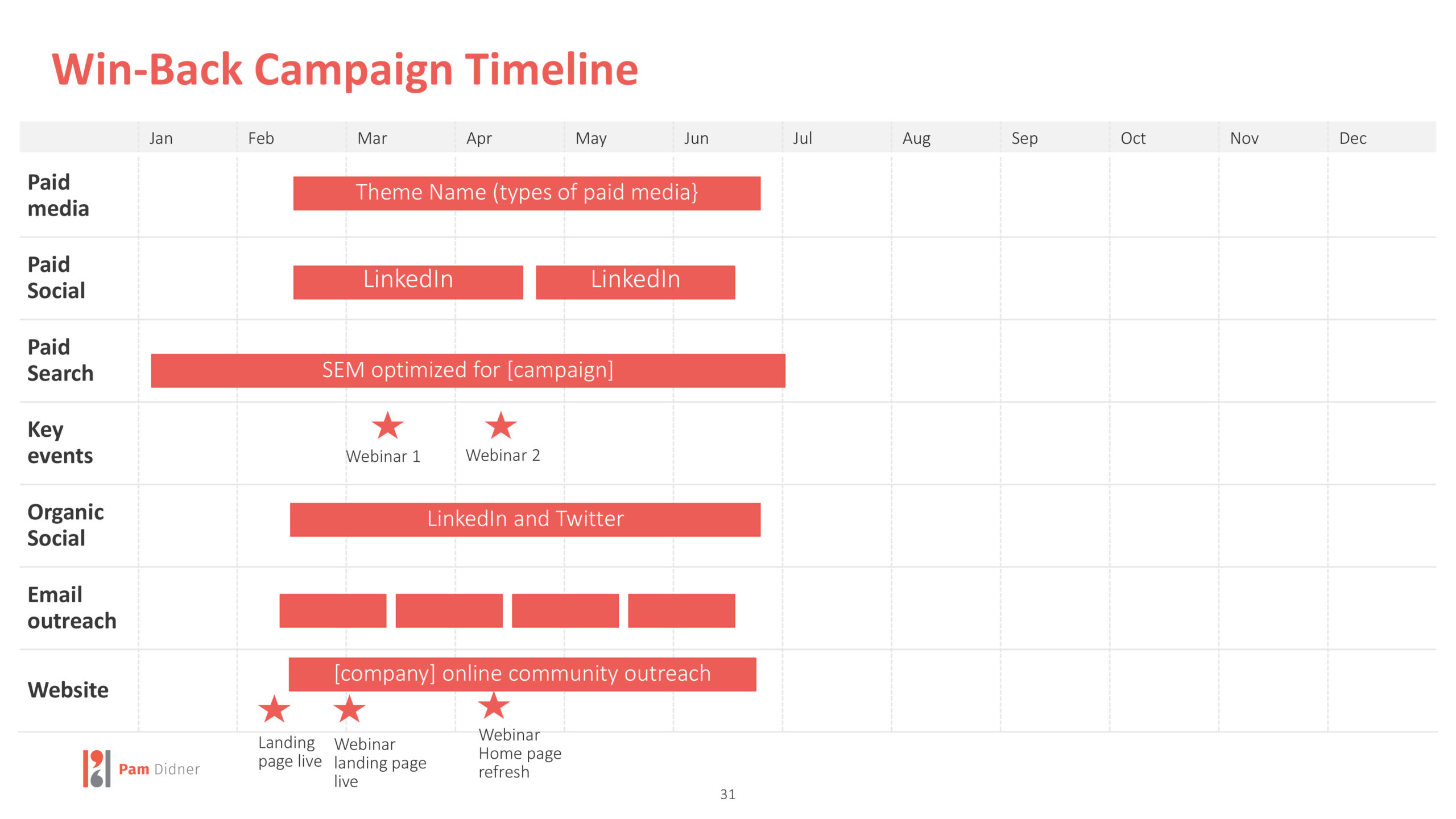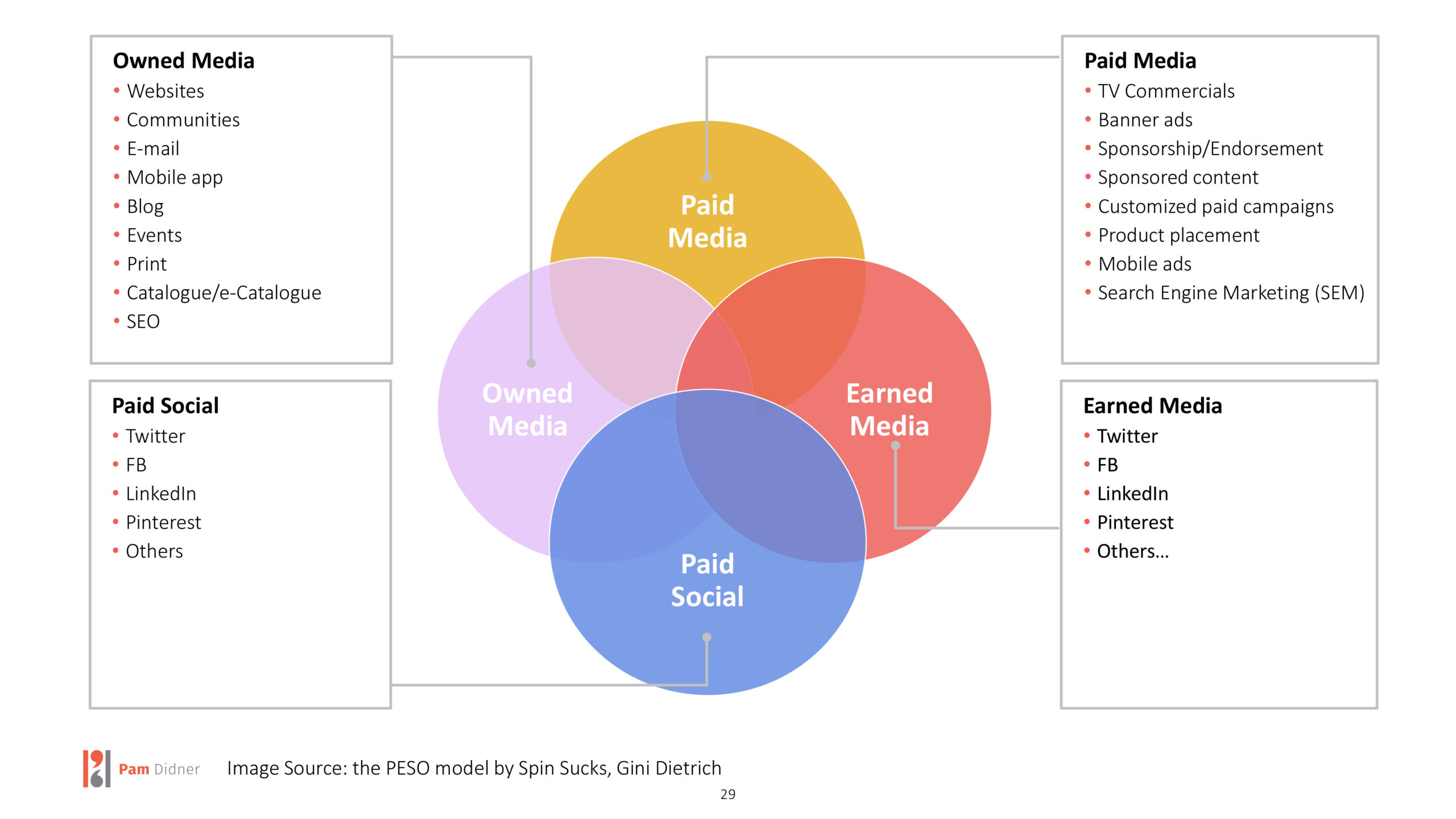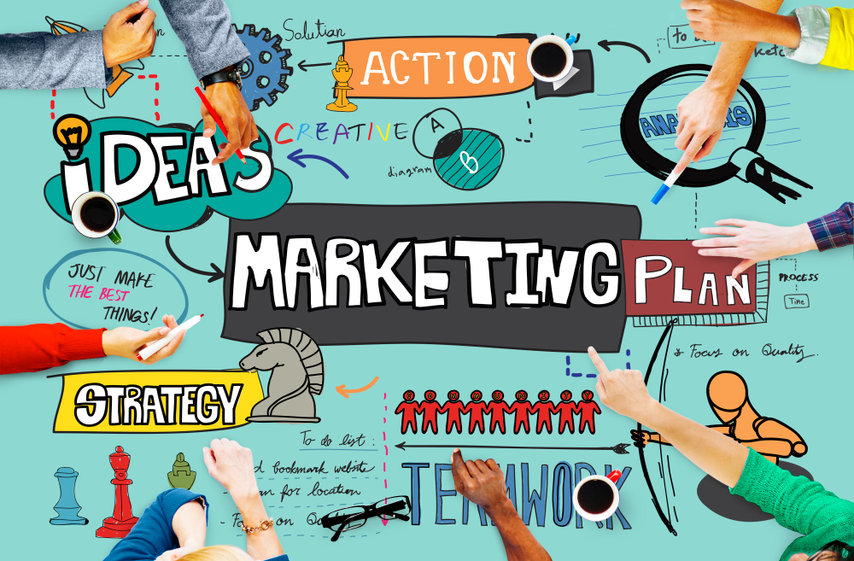
The end goal of marketing is to build awareness and drive demand for our products and services. One way to achieve that is to create a campaign for an extended period. Unfortunately, in the world of social media, many campaigns are run almost constantly, which requires more editorial planning than campaign planning.
So, what is a marketing campaign plan?
A campaign plan is a mixture of targeted outreach tactics on a large scale over a period of time. It usually involves many resources across many departments in a company.
Examples of a marketing campaign:
- product launch
- sponsorship
- marketing event
- seasonal promotion
- significant research paper or eBook launch
We use the term “campaign” frequently; sometimes, we’re referring to a single marketing activity, such as running an email or a webinar as a campaign.
Why is campaign planning important?
Within enterprises, an integrated campaign is coordinated and executed by many business and marketing functions. A campaign plan is an internal and confidential documentation that:
- Aligns the product, business units, corporate marketing, national marketing, sales, PR/and agency partners
- Guides sales, PR/AR, and marketing executions
- Is used for management to provide feedback to the overall campaign
- Serves as a baseline to make necessary changes
In reality, there are many elements in a large-scale campaign. The PR team works on briefing to update the press and analysts. The events team manages the CEO’s keynote and sponsorship events. The social media and media teams coordinate on paid media buys and organic posts.
The subject matter expert and content team create marketing content and sales collateral. In addition, salesforce and channel partners need to be trained and briefed on messaging and talking points.
To ensure minimal confusion and maximally flawless coordination, we need to have a plan in place. (Yes, plan for the sake of planning!)
You can reap major benefits once a well-documented plan is in place, so be sure to:
- Create one unified voice
- Inform management and internal stakeholders
- Align all players to move in the same direction
- Brief agencies and contractors
- Monitor progress and make changes in real-time
What is the biggest secret to creating a holistic campaign plan?
Well, be nosy! You need to know who does what and when.
Actively talk to different stakeholders to find out what they are doing. And, likely, you won’t get an answer the first time—follow up, follow up, and follow up some more.
One effective way to ensure you get updates is to have a regular campaign planning/check-in meeting. It can be weekly or bi-weekly.
Pro-tip: Depending on the scope of the campaigns, I’d recommend that you kick off the campaign planning meeting 16-20 weeks before the actual campaign dates begin. You may start with monthly calls, then move to weekly meetings. The key is to ensure everyone knows who does what and resolve any issues quickly to keep seamlessly moving forward.
Ok, what questions should be addressed in the campaign plan?
The best way to create a campaign plan is to create a list of questions you believe your internal stakeholders would ask and/or that you need to incorporate to move everyone in the same direction.
Here are the most common questions that should be addressed in your campaign plan:
- What is the campaign objective?
- Who is your audience?
- What products and launches will be included?
- What are you going to say?
- How do you measure success?
- What is the list of content that will be created?
- What channels are you going to use for outreach?
- How much does this campaign cost?
- What do you need sales and channel partners to do?
- What does creative look like?
Create an executive summary (two-pager) to summarize your campaign plan
When you create plan decks, it’s important to have a summary slide at the beginning of the deck to rally your audience before diving into the nitty-gritty details.
Here is the two-pager template that I suggest my clients use:
Following your executive summary slide, you can incorporate additional slides into your planning presentation. These can include:
Personas:
Many companies have more than one persona. It’s important for your campaigns to identify the personas that you will go after so there is no dispute about who you would like to target.
Product launches and campaign timeline:
When you run a campaign, it’s nice to put into context how your campaign fits into major events within your company. Everyone is busy, and our minds are scattered. Visualizing key dates in a timeline format helps everyone connect the dots and put your campaign in perspective.
Messaging framework and content:
The common questions asked by your stakeholders when you put a campaign together are “What can we say?” and “What content can we use?”
In your deck, you should have a summary of messaging and talking points and a list of content that can be used for different marketing and sales channels.
Check out my messaging framework blog post to get the templates you need.
Creative:
In addition to messaging and content, everyone wants to know what creative looks like. This is especially important for content creation, image selection, speech or video scriptwriting, and video editing.
I’ve discovered that creative is eye candy. Management loves to see creative, including stage, booth design and website mock-up. They also love to provide feedback on creative; everyone is a critic, and everyone has something to say.
Marketing Channels:
Large-scale campaigns tend to dial up multiple channels, so show everyone what channels are planned to be used and when.
Below is a fairly comprehensive list of channels.
Circle the channels that you will leverage, and please also add them to your two-pager summary.
Success Measurements:
Obviously, we create campaigns for a reason. So, how do we measure our success? If it’s related to demand gen, can we track qualified leads? If it’s about building brand awareness, can we track web traffic growth month-by-month or something else?
Wherever metrics you use, it’s more impactful if you can tie it closely to sales or conversion-related sales. Sometimes, this is not easy, especially when it comes to metrics related to the top of the purchase funnel. I’d make sure that you have buy-in from your management.
Campaign budget:
In enterprises, the campaign budget may be scattered across many groups and functions. It’s hard to get the total picture. Also, many marketers don’t like to share budgets openly when they present to the broader team.
When the campaign budget is more centralized in a smaller or mid-size company, it doesn’t hurt to share information so that everyone is on the same page.
Other best practices
I often suggest my clients add additional supporting slides, such as the results of previous campaigns. If you do that, it’s also nice to talk about what went well and what didn’t as a testament to lessons learned.
If you have any recommendations, such as running Facebook paid ads this time around or adding an Amazon product page, please explain why and have data to support your points of view. You are not asking for permission; you are telling them with authority that you are doing it and are justifying why.
Everyone’s campaign plan is different
Bear in mind that everyone’s campaign plan is different. What works for my clients may not work for you completely. If you use a template (mine included), be sure to modify it and add/delete slides as you see fit.
The best way to determine the flow and content of your campaign plan is to understand what you want to communicate and what your management and stakeholders want to see.
The ability to create a solid campaign plan demonstrates your strategic thinking capabilities and a solid understanding of your company’s marketing outreach programs.
I love working with my clients on their campaign planning templates. If you need help or want to brainstorm, please schedule a call with me. It’s complimentary.
#CanDo
Additional material:
Improve Your Decision-Making Process and Build A Marketing Continuity Plan
Important Templates You Need To Update Your Marketing Plan AGAIN Post Covid-19
How to Deliver a Virtual Presentation to Management Successfully
How to Change, and Adapt Your Marketing Strategy

